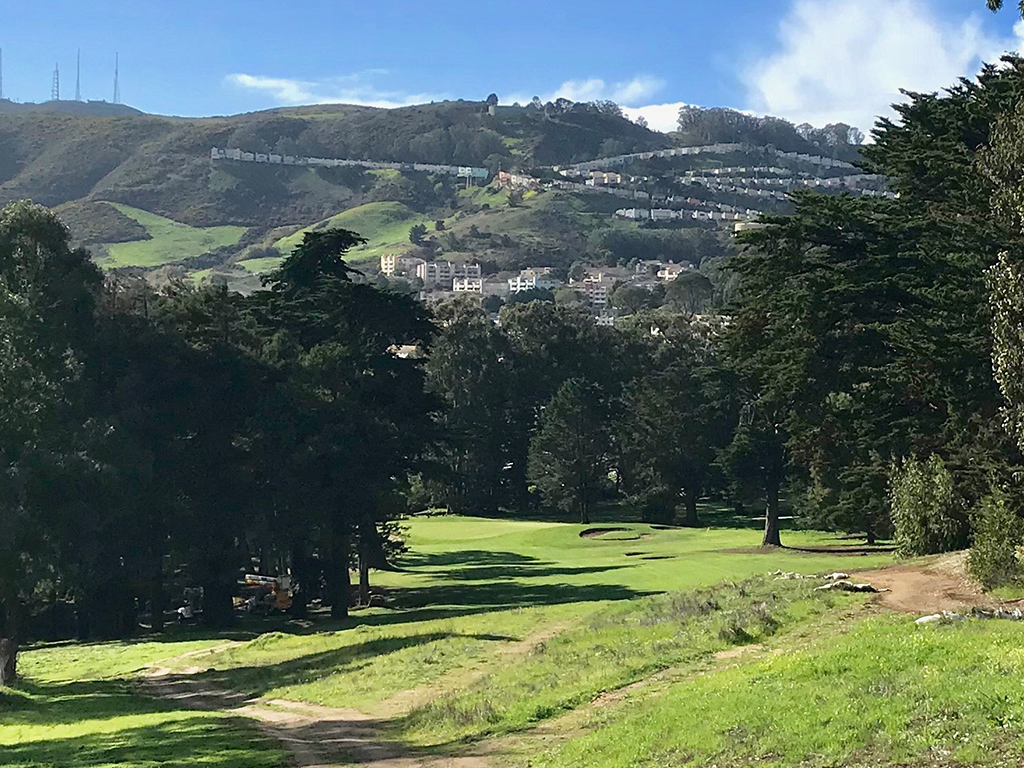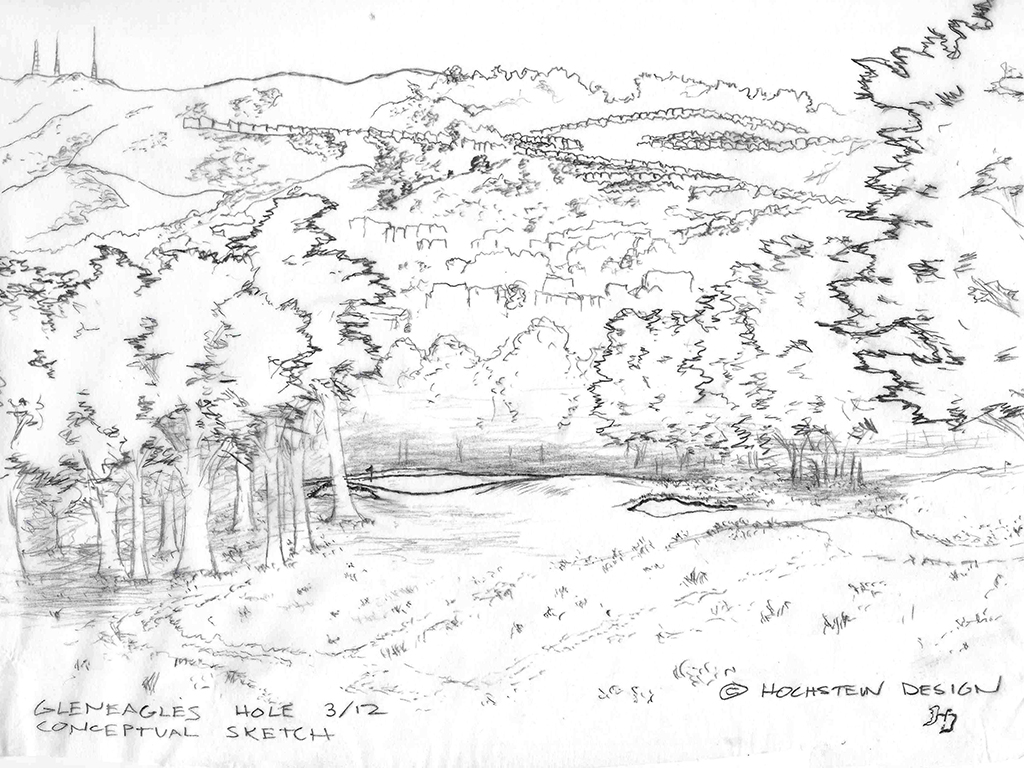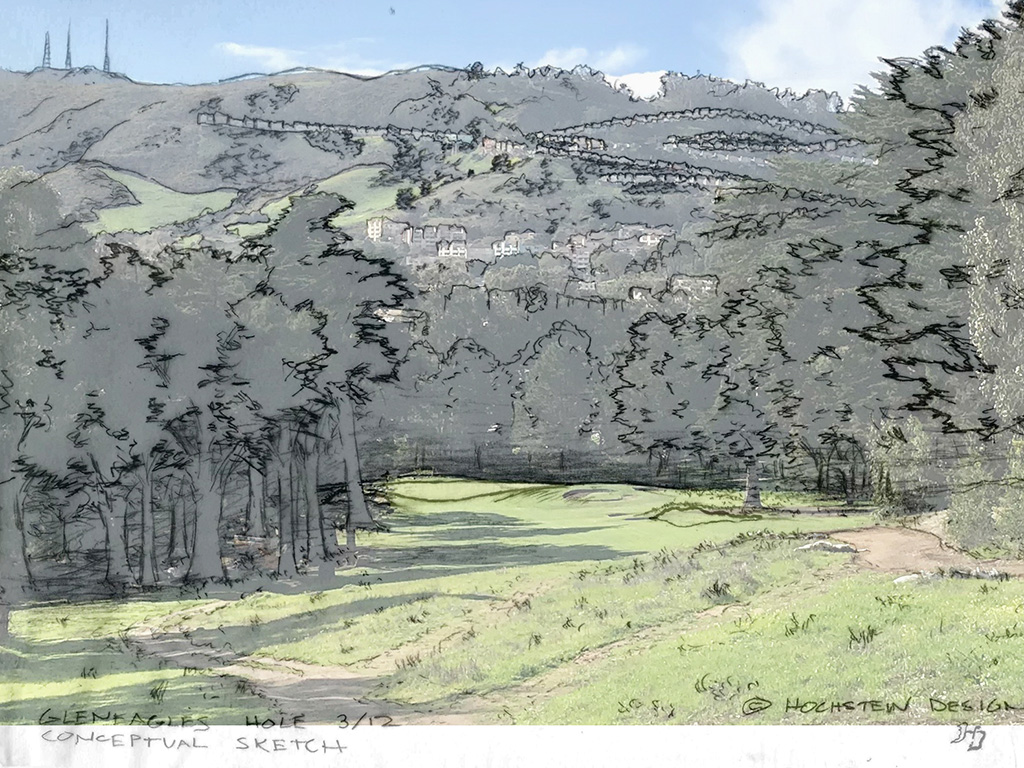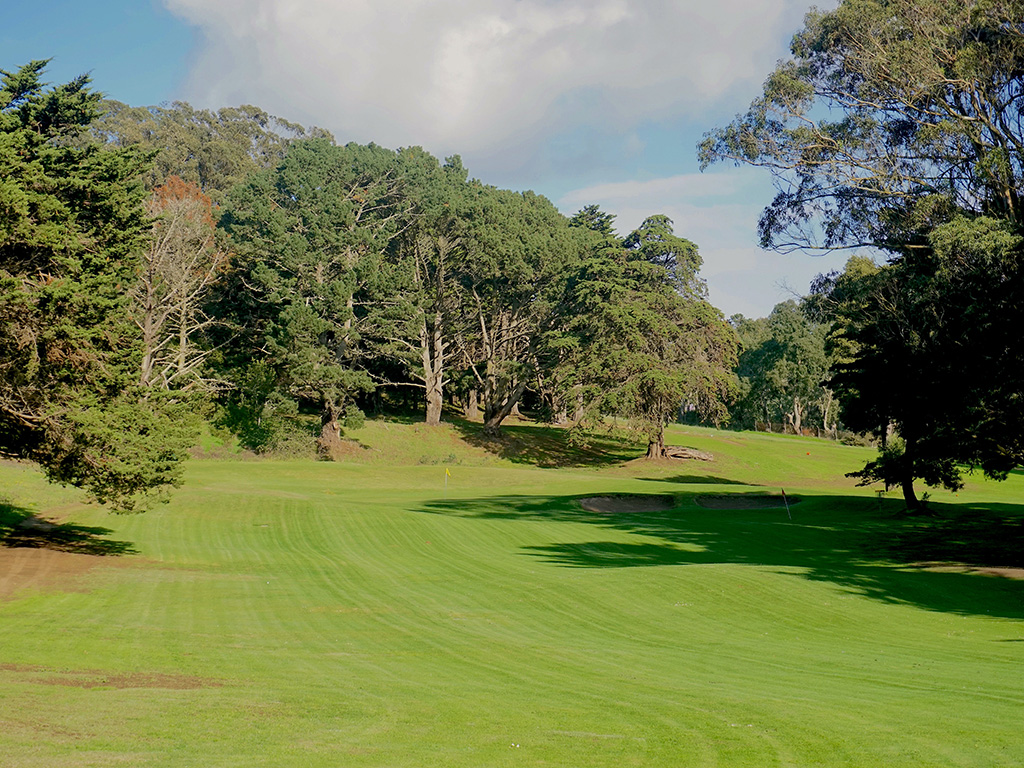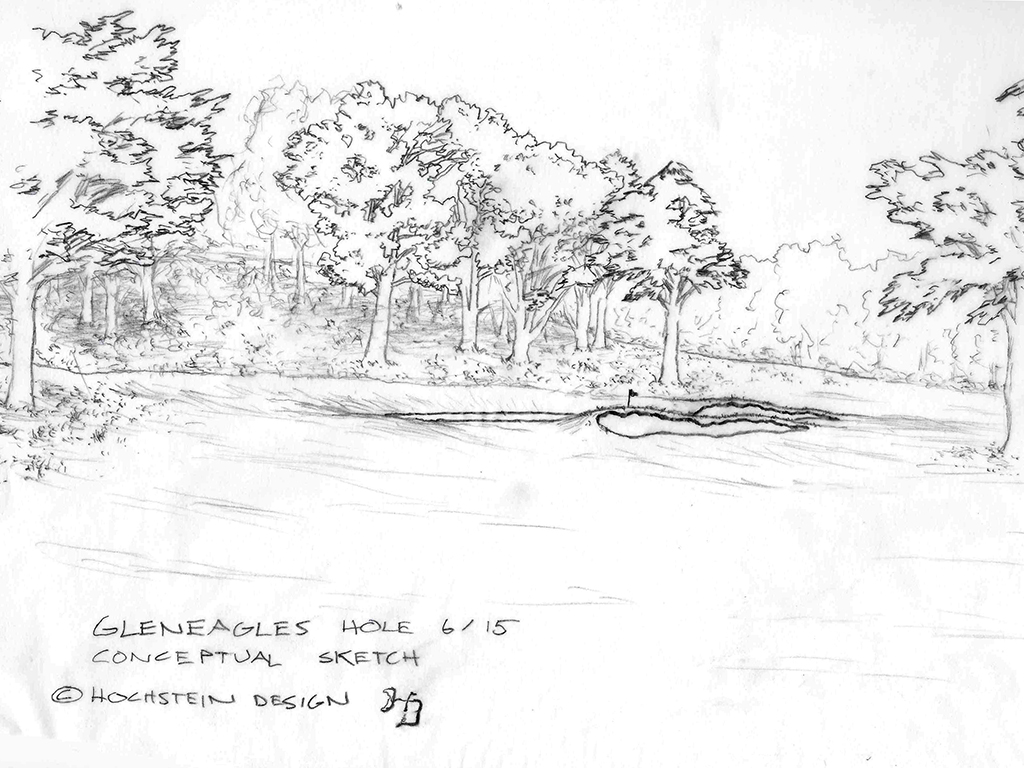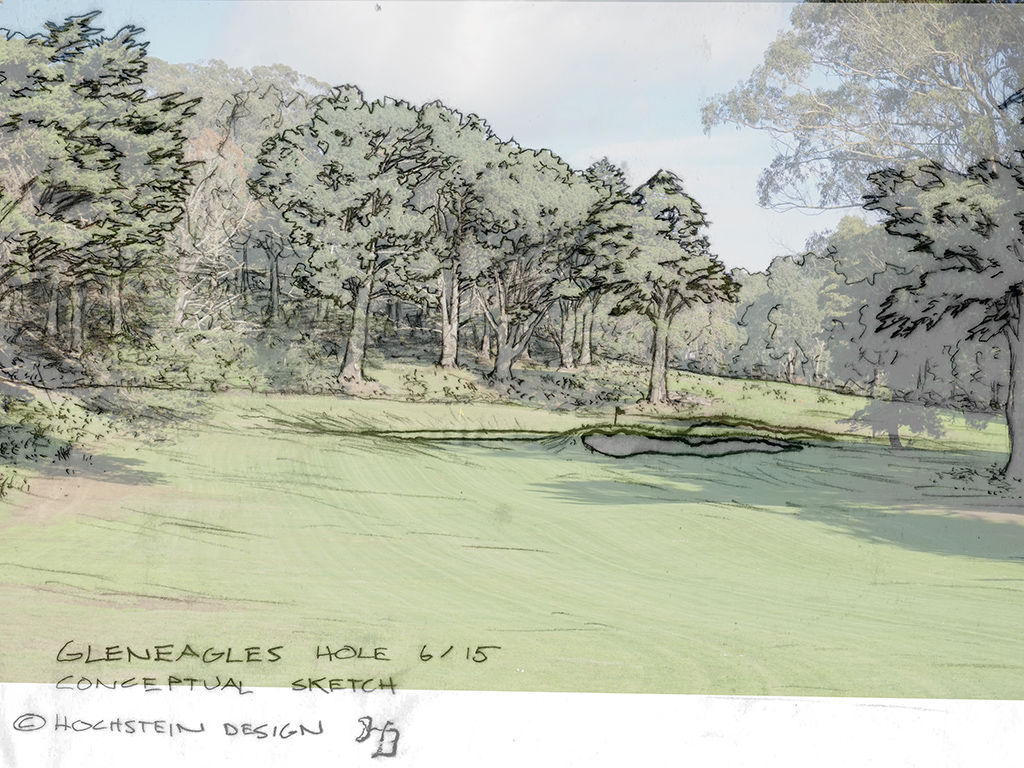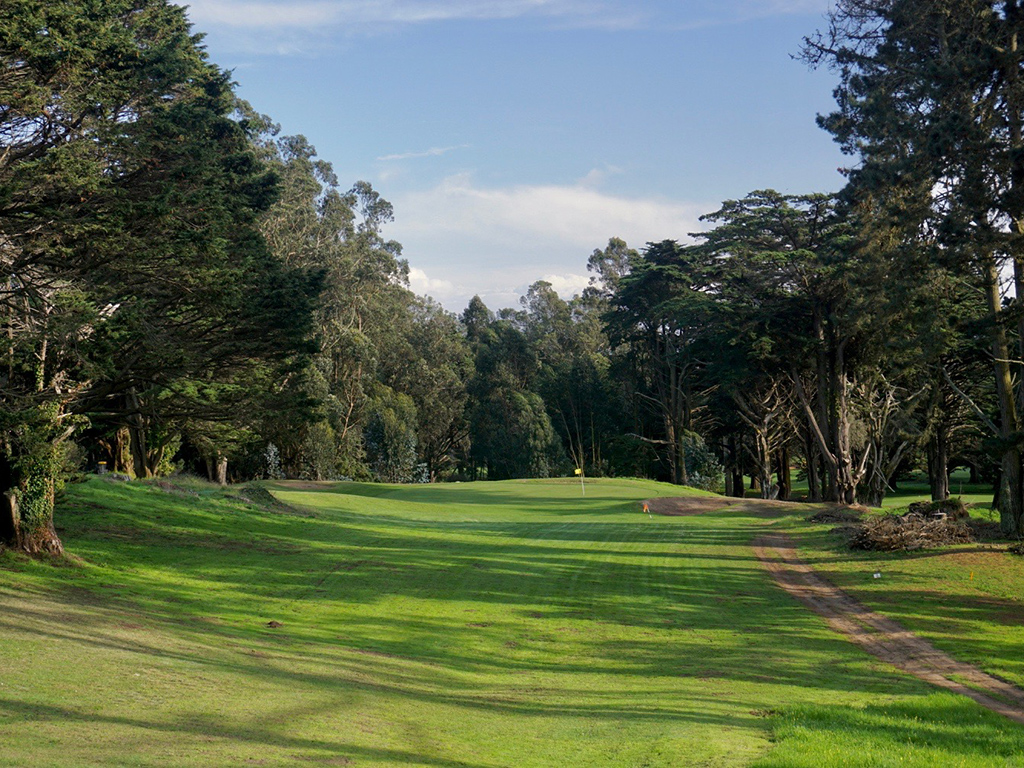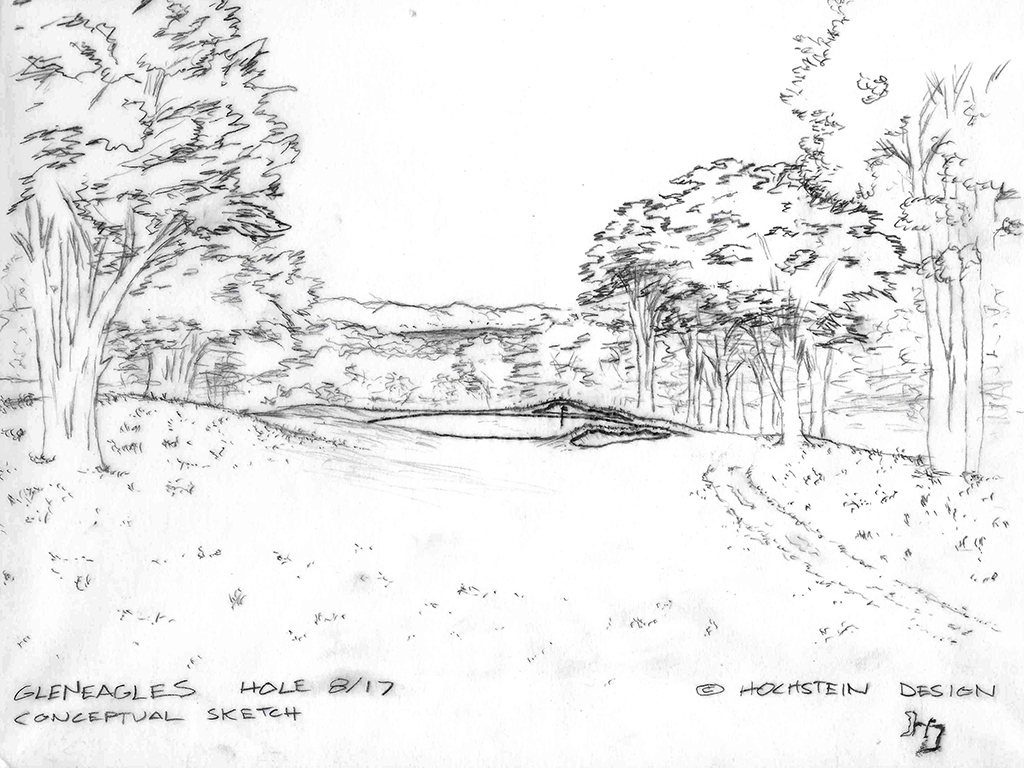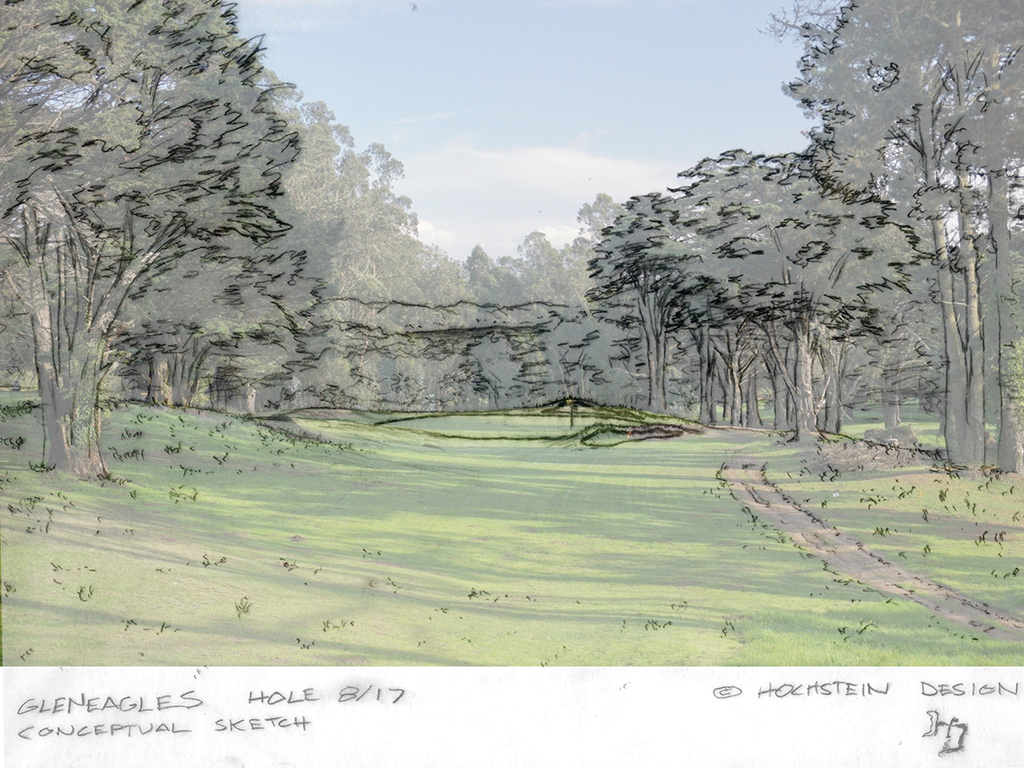“I don’t give a s— if you’ve played Olympic or Harding Park or Presidio; if you haven’t played Gleneagles, you don’t know anything about Bay Area golf!” -Patrick Boyd (The Golfer’s Journal No. 2)
It doesn’t have the tournament history of Olympic. It doesn’t get the social media adulation of Cal Club. It doesn’t have the grandeur of SF Club. But Gleneagles Golf Course more than makes up for its disadvantages with character. And characters.
Known for its difficulty, a group of sneaky-good regulars, and a low-key, blue-collar vibe, Gleneagles (not that Gleneagles) is decidedly old-school San Francisco. The clubhouse is a step back in time, with dusty old décor, warm lighting, and the type of soft jazz coming through the speakers that only veteran SF cabbies seem to love. You won’t be able to find the latest TaylorMades in the pro shop—because there is no pro shop. But you can help yourself to most any Highland single malt at the bar, which overlooks the course and the San Francisco Bay and is a contender for the best hangout spot in all of golf.
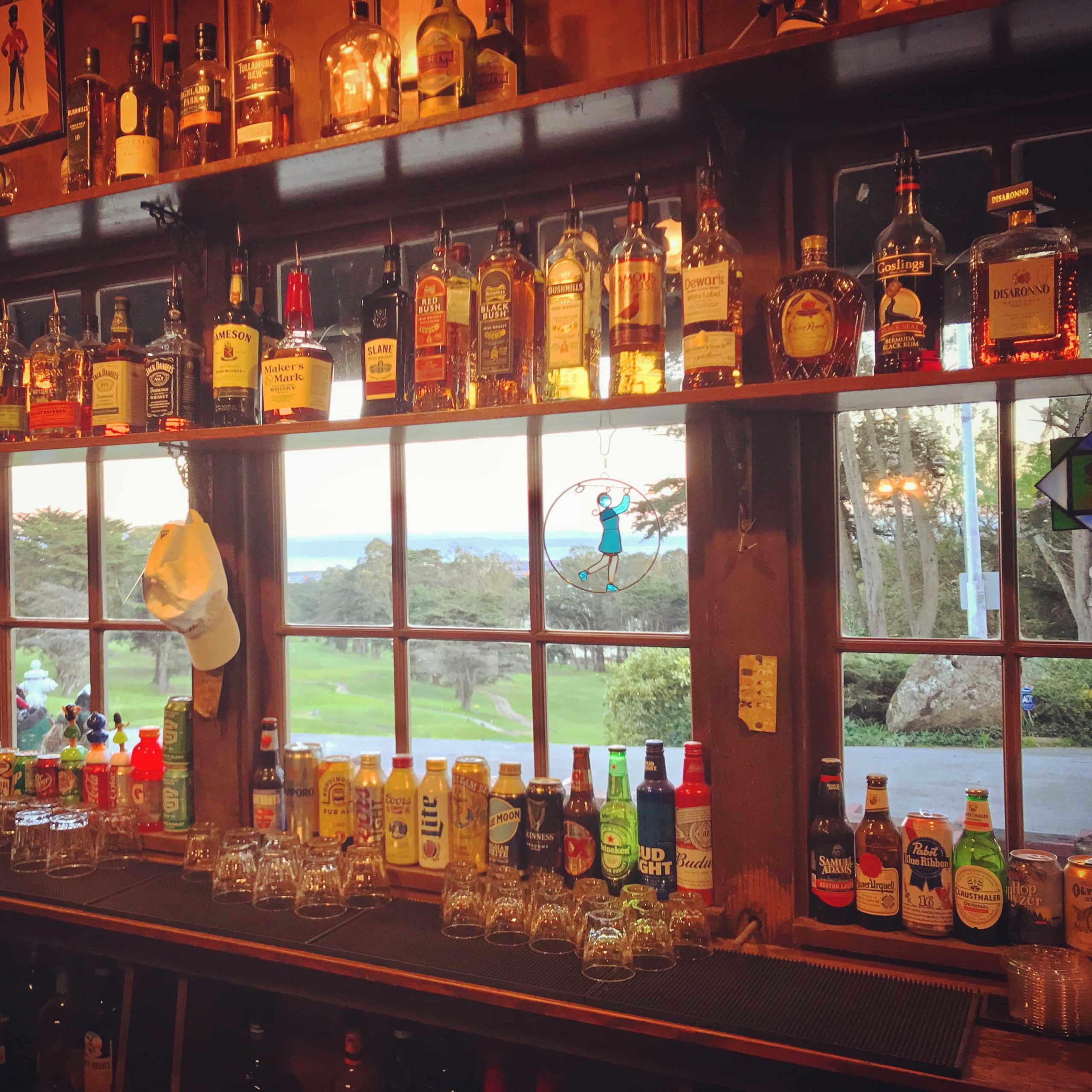
A portion of the selection in the bar at Gleneagles. Photo credit: Brett Hochstein
Gleneagles is something of a forgotten child in San Francisco. Of the six golf courses owned by the city, it is the only one not operated or funded by it. Tucked away in the overlooked, poorly-served southeast corner of the city, the course in turn gets overlooked by many golfers. That’s their loss.
A nine-holer at the base of McLaren Park, which also served as the course’s original name, Gleneagles has been challenging locals for nearly six decades. Designed in 1962 by Jack Fleming, a longtime protégé of Alister MacKenzie, the up-and-down routing loops through mature cypresses, Monterey pines, and eucalyptus. It gains over 120 feet of elevation from the 4th tee to 9th green, but you don’t ever feel like you’re doing any real hill-climbing. This is a testament to how cleverly Fleming moves the golfer through the tilted property.
There are plenty of sidehill lies, often running opposite to how you want to work the ball on your approaches. Add in the trees, the tough greens, and the cold, fog-laden afternoon winds, and the course earns its reputation as one of the toughest in the area. Local urban legend maintains that Lee Trevino once came by during a tournament week, shot a 71, and then, “after getting to know the course better,” fired a 73.
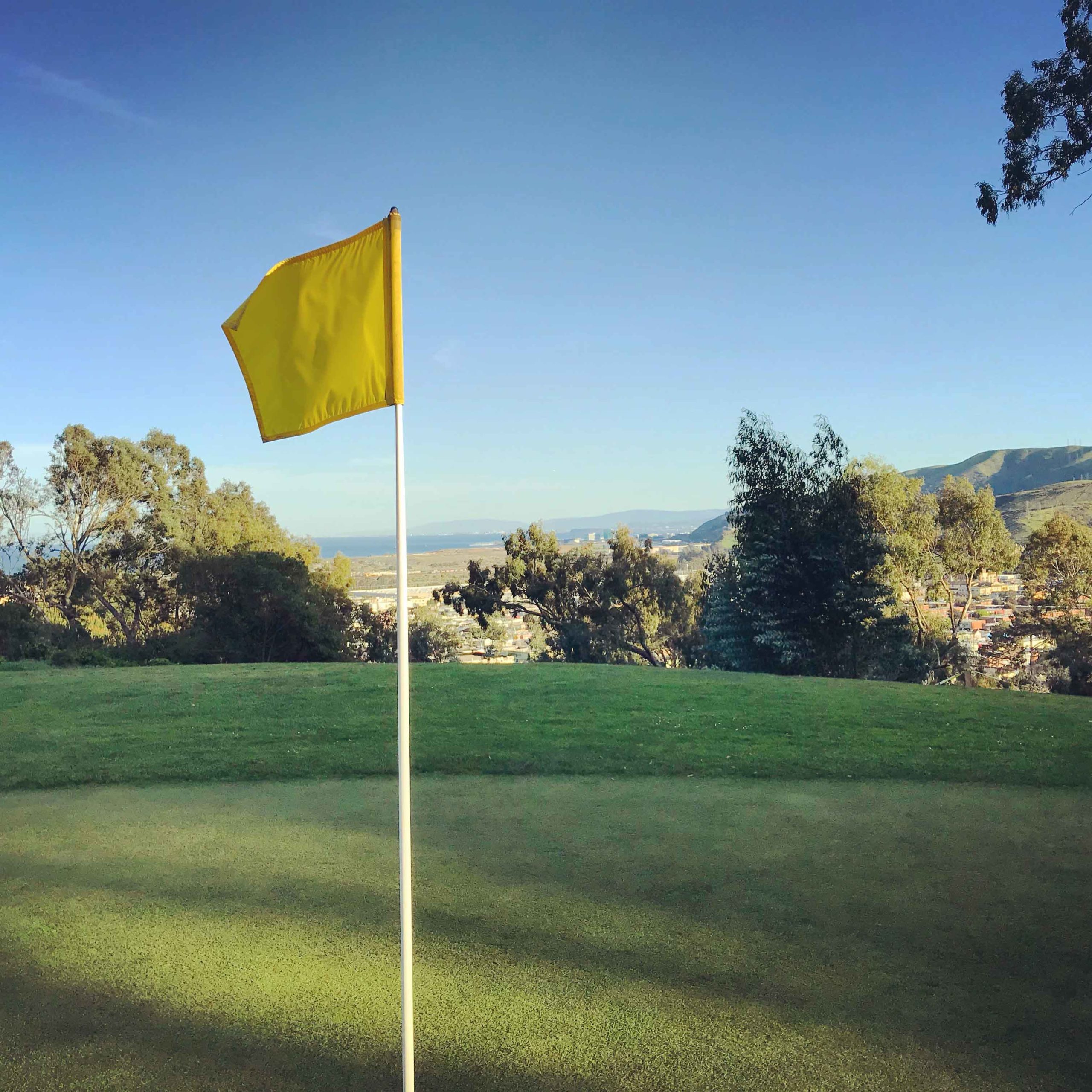
The view from Gleneagles. Photo credit: Brett Hochstein
Gleneagles also has a fun side to it, though, especially inside 50 yards. As at any course worth its salt, the greens are the star of the show. The slick, firm bentgrass surfaces are heavily tilted and provide plenty of challenge, strategy, and tricky recovery scenarios from wrong-side misses. The rest of the course is maintained at one intermediate height of fairway cut, so when it’s dry, bump-and-run shots are an option most everywhere. On holes 1, 6, 7, and 8, playing away from the green and feeding it on is often a better option than taking dead aim.
The putting surfaces weren’t always the slick and smooth surfaces you see today. In 2010, Gleneagles lost its greens to a combination of age, management issues, and insect infestation. It was an anxious time, but the golf industry rallied around the course. Thomas Bastis of Cal Club drove the efforts, loaning equipment, labor, and his own agronomic expertise. George Waters lent his design and shaping skills to fix some trouble spots and restore the 1st green back to its original position. Numerous companies offered steep discounts on materials. Many golfers and industry people gave their time and labor.
The results exceeded expectations. The greens didn’t just go back to being playable; they were instantly better than ever, the fast bentgrass exaggerating every wicked slope and encouraging more play along the ground.
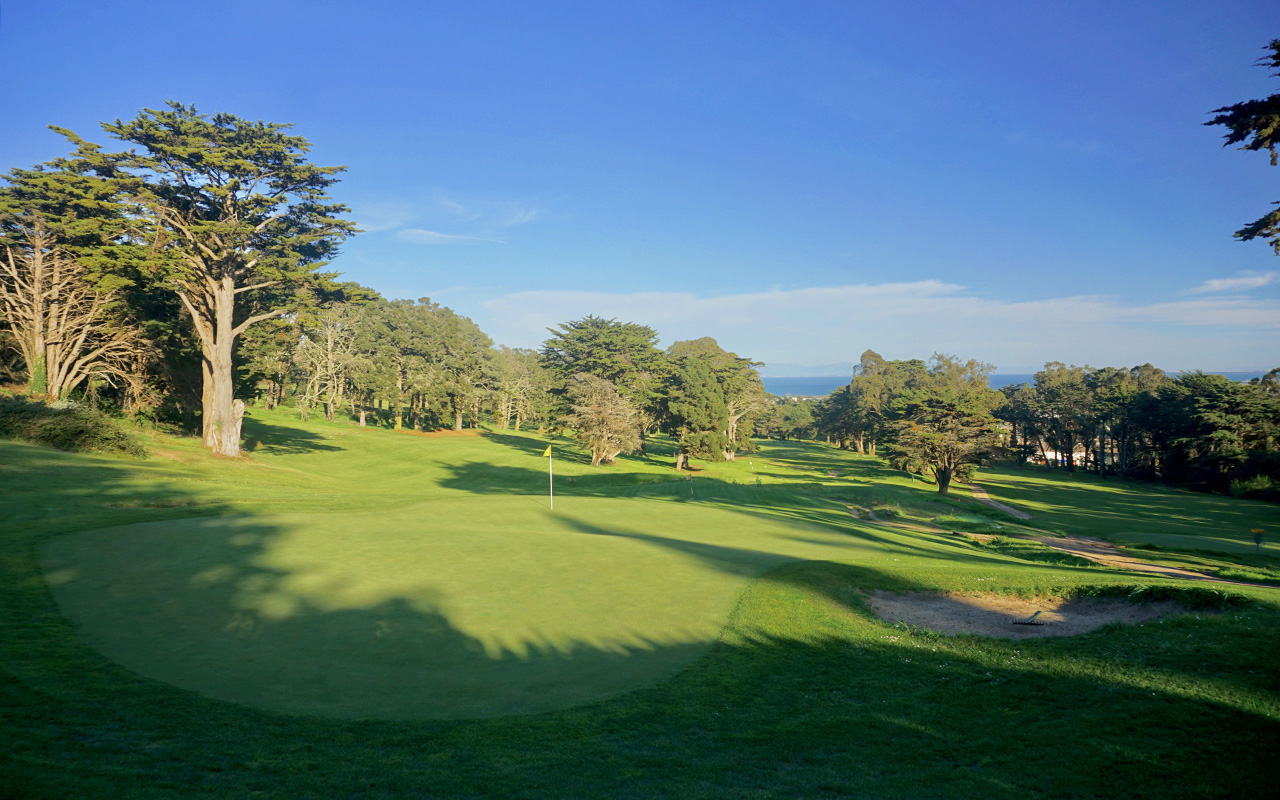
Behind the 9th green at Gleneagles. Photo credit: Brett Hochstein
Now, almost ten years later, the greens are still playing well and consist of a strong, almost pure strain of bentgrass. What’s the secret? Ironically, it’s probably the same thing that plagues the course—a lack of resources. Because of the extreme cost of San Francisco water as well as a generally low budget, Gleneagles takes a “less is more approach” to maintenance. And it works! Bent is a hardier grass, capable of outcompeting Poa annua, which thrives on extra water and fertility inputs. While some high-end clubs struggle to keep the Poa at bay, Gleneagles has been doing just fine by not doing much.
The small staff splits its time between the clubhouse and the course. Proprietor/lessee Tom Hsieh is part of that “do-it-all” crew, jumping between mowing greens, playing janitor or mechanic, tending bar, keeping the books, and most of all coming up with ways to keep this treasured place alive.
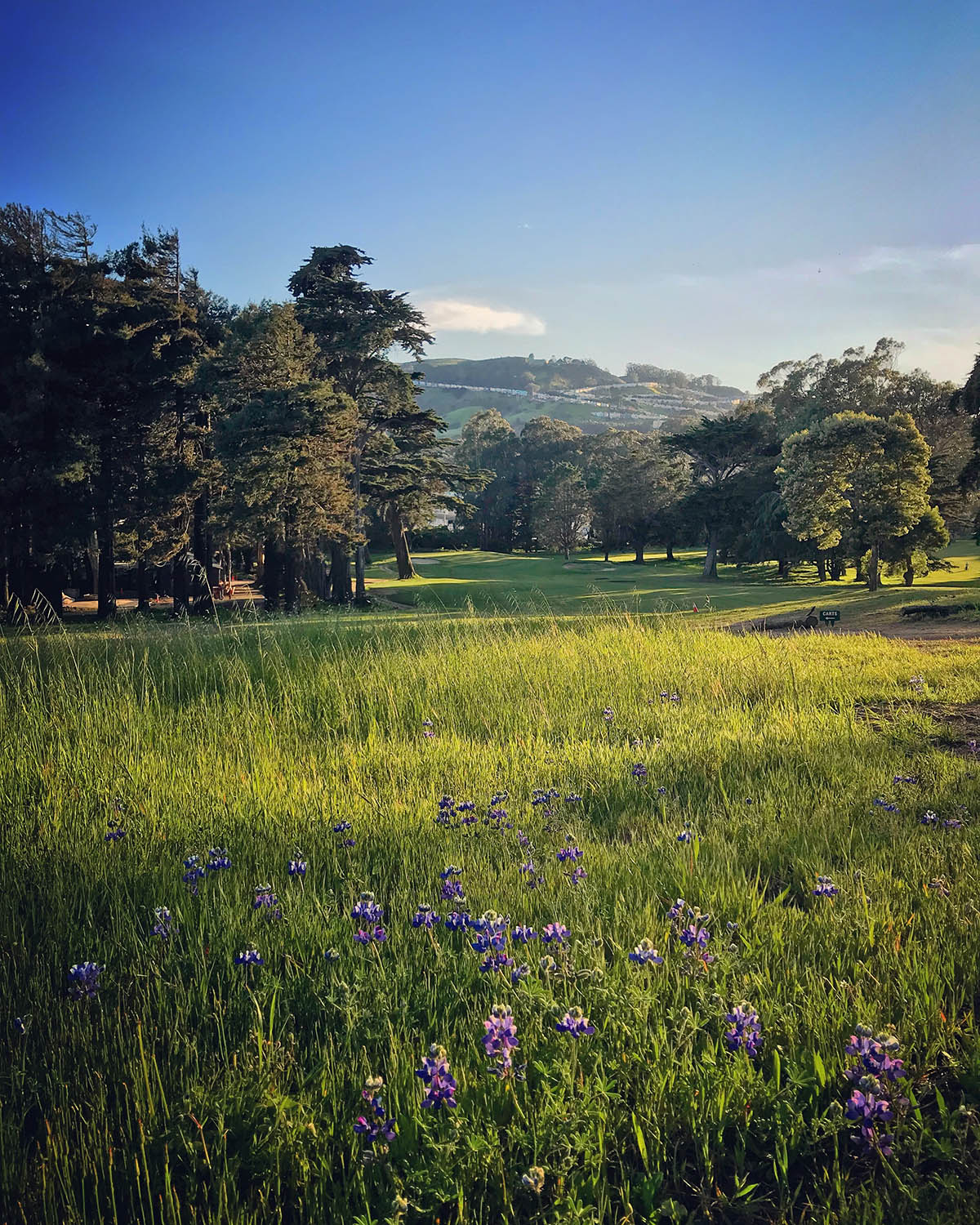
In bloom at Gleneagles. Photo credit: Brett Hochstein
Hsieh grew up playing Gleneagles and always loved the place. Back then, a big, charismatic Swede named Erik de Lambert held the lease. It was de Lambert who first saved the course from extinction in 1980, leasing it from the city and renaming it after his favorite course, Gleneagles in Scotland. He injected capital, altered design features, and created a culture that still thrives today. In 2004, de Lambert decided to move on, and the course again appeared likely to close. But history repeated itself, and Hsieh stepped in with a bid and subsequent capital improvements.
Unfortunately, the struggle to stay operational has also repeated itself. The city provides neither financial support nor resources, yet it caps round prices and keeps raising water rates. Gleneagles now spends more on water than on labor, which is unheard of in the industry as well as shocking considering how little water the course uses. Keeping the place afloat takes a lot of creativity and hard work.
I have offered some of my own help over the years, first chipping in to weed bunkers as a city resident “intern” in 2011. More recently I have done some informal, pro-bono consulting on matters ranging from which trees need to go, where hypothetical paved paths ought to be, how to firm up surrounds, and what should be done with the bunkers.
While Gleneagles has done a small portion of the necessary tree removal, most of my suggestions are still dreams and schemes, even though they could be carried out for a fraction of most clubs’ annual improvement budgets. Understandably, Tom Hsieh’s focus remains on daily and, in good times, deferred maintenance. A big win last year was removing brush piles that had accumulated over the years as well as limbing some critical trees.
Right now, Gleneagles could really use another win. The COVID-19 pandemic has forced most Bay Area golf facilities to shut down temporarily, and Hsieh has been under orders from San Francisco Recreation and Parks to stay closed at least until May. For Gleneagles, which operates on thin margins in the best of times, that’s a big ask. Almost all staff members have already been laid off. With no revenue coming in, Hsieh will find it difficult to pay bills and keep up regular maintenance. He has admitted that the course may not make it through the crisis. So he has ditched pride and started a GoFundMe page.
While he acknowledges—correctly—that there are more important and pressing causes right now and encourages everyone to donate to them first, he is also asking the golf community for help. Consider chipping in, especially if you’re from NorCal.
And if the course survives, do yourself a favor and check it out for yourself. Bring your “A” game and be sure to allot yourself enough time post-round for a round. Or rounds.
Check out Tom Hsieh’s appearance on the Butcher Shop radio show and, if you’re so inclined, contribute to the Gleneagles GoFundMe campaign.
Brett Hochstein is a California-based architect and shaper who has worked for Renaissance Golf Design, Origins Golf Design, Infinite Variety Golf Design, and the Arnold Palmer Design Company. You can find more of his writing on his website.


 by
by 